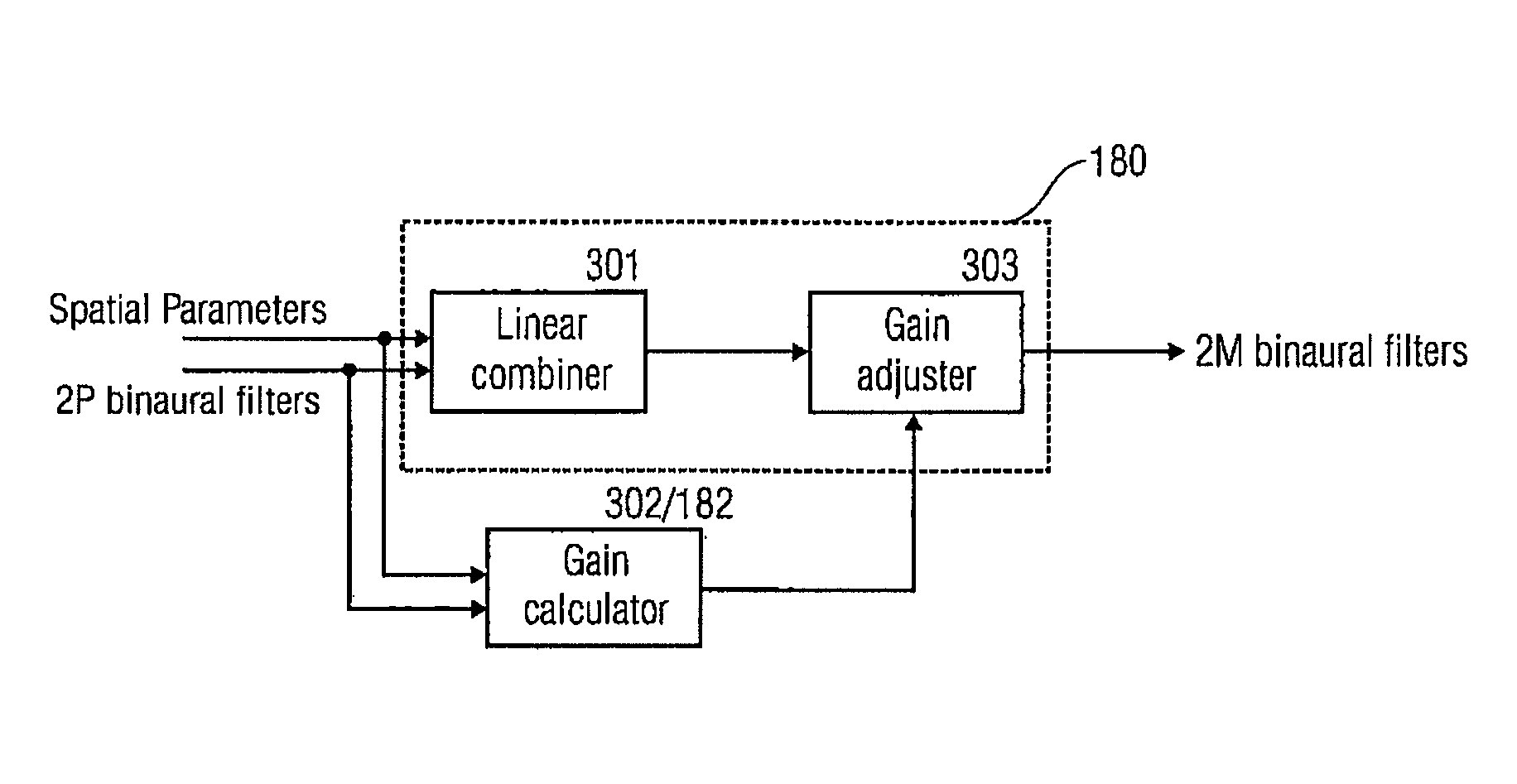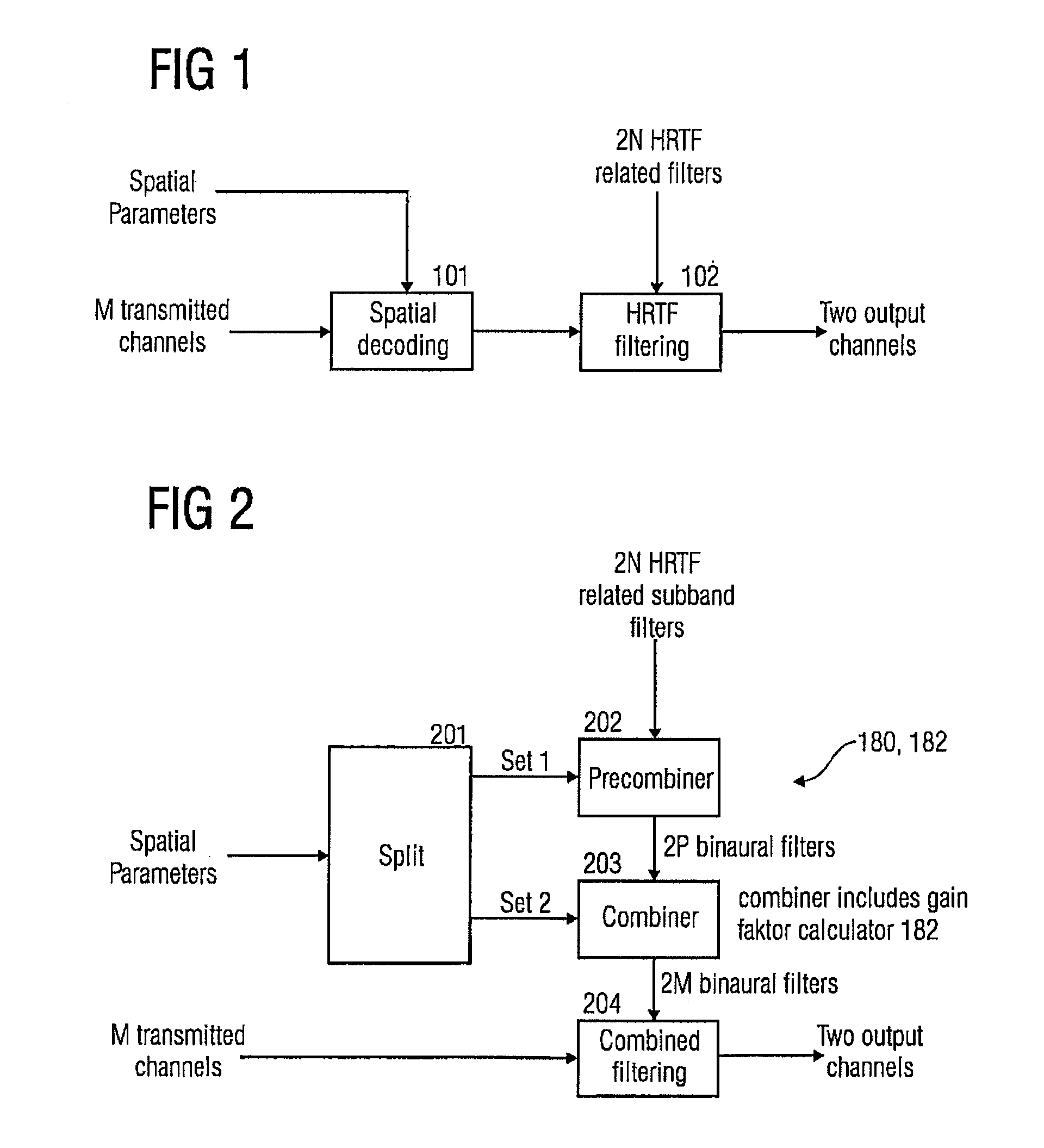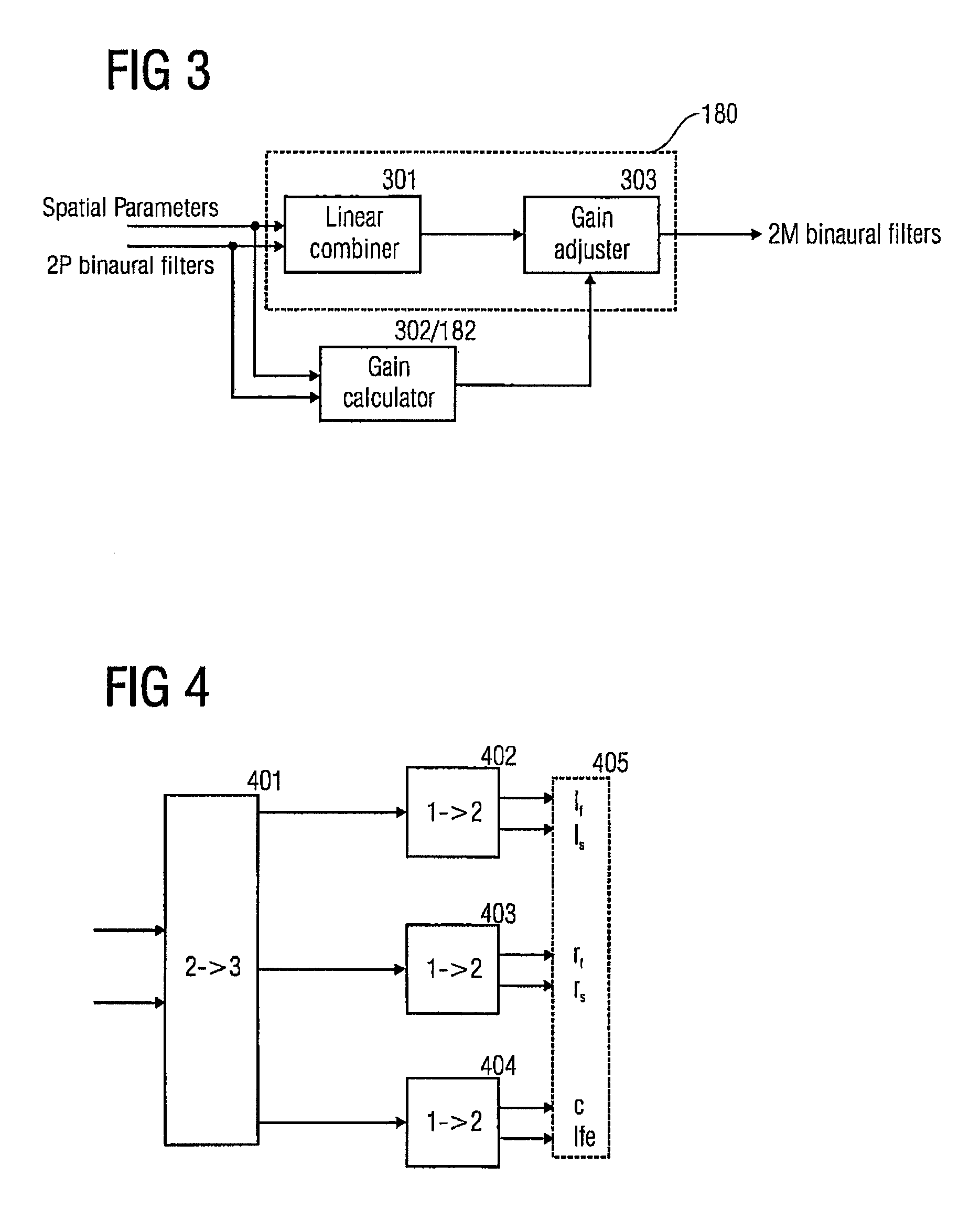Binaural multi-channel decoder in the context of non-energy conserving upmix rules
a multi-channel decoder and upmixing technology, applied in the field of binaural decoding of multi-channel audio signals, can solve the problems of energy error, unfavorable binaural output spectral coloring, and one will receive artifacts which are particularly serious
- Summary
- Abstract
- Description
- Claims
- Application Information
AI Technical Summary
Benefits of technology
Problems solved by technology
Method used
Image
Examples
Embodiment Construction
[0041]Before discussing the inventive gain adjusting aspect in detail, a combination of HRTF filters and usage of HRTF-based filters will be discussed in connection with FIGS. 7 to 11.
[0042]In order to better outline the features and advantages of the present invention a more elaborate description is given first. A binaural synthesis algorithm is outlined in FIG. 7. A set of input channels is filtered by a set of HRTFs. Each input signal is split in two signals (a left ‘L’, and a right ‘R’ component); each of these signals is subsequently filtered by an HRTF corresponding to the desired sound source position. All left-ear signals are subsequently summed to generate the left binaural output signal, and the right-ear signals are summed to generate the right binaural output signal.
[0043]The HRTF convolution can be performed in the time domain, but it is often preferred to perform the filtering in the frequency domain due to computational efficiency. In that case, the summation as shown...
PUM
 Login to View More
Login to View More Abstract
Description
Claims
Application Information
 Login to View More
Login to View More - R&D
- Intellectual Property
- Life Sciences
- Materials
- Tech Scout
- Unparalleled Data Quality
- Higher Quality Content
- 60% Fewer Hallucinations
Browse by: Latest US Patents, China's latest patents, Technical Efficacy Thesaurus, Application Domain, Technology Topic, Popular Technical Reports.
© 2025 PatSnap. All rights reserved.Legal|Privacy policy|Modern Slavery Act Transparency Statement|Sitemap|About US| Contact US: help@patsnap.com



